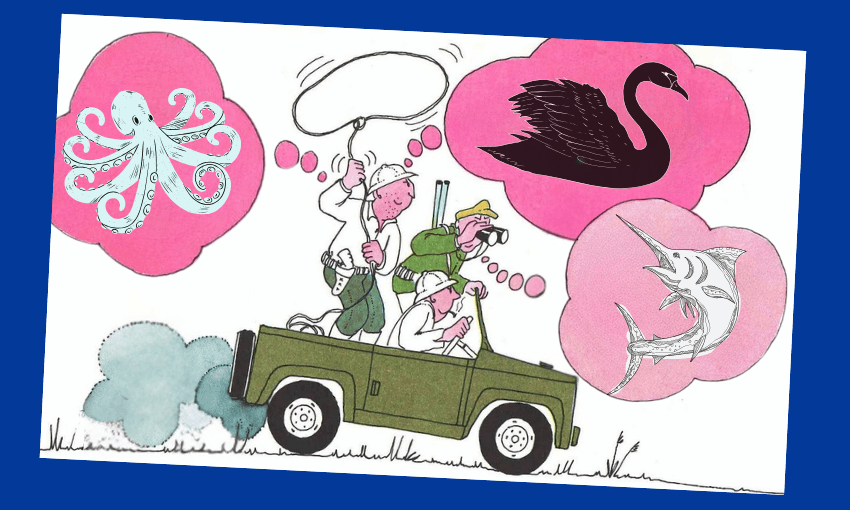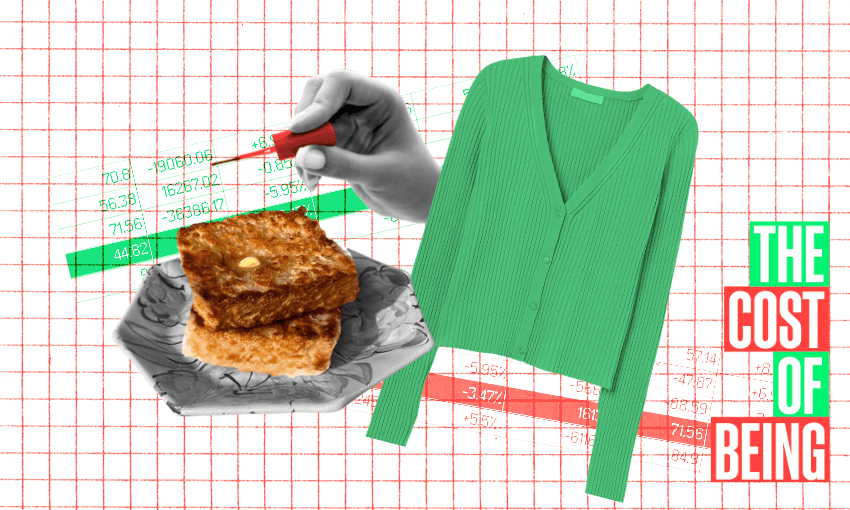The media is rife with headlines about people killing animals for kicks. Please don’t.
In memory of an Auckland swan, a Bay of Plenty octopus and a Taranaki striped marlin.
Imagine this. It’s 7.15am. You’re paddling around on a serene lake with your sweetheart. It seems likely that she’ll give you a loving peck soon and morning sunlight is glittering the water. Life is sweet. Then a man in jorts and a white T-shirt briskly arrives at the bank. He bends over, grabs your head, and pulls you up. He hits you on the head and shoves you into a black bag. Your poor little webbed foot flops out, lifeless, and your sweetheart paddles away, heartbroken.
Or, perhaps you’re on the beach, checking out a rock, stretching your eight legs and minding your own bloody business. A pair of baby-blue Crocs approaches, and before you get the chance to say hi, a teenaged boy starts punching you in the head. You try to escape but he will not let up as his friends cheer him on.
You could even be in an element where humans aren’t supposed to be, several kilometres off the coast of Taranaki in the big blue, slicing the 78.6kg of your long body through the ocean, when an engineer in a wetsuit with a spear gun jumps in. As you turn away he shoots you, attaching a line and buoys, so he can follow you and shoot you again. He’s been waiting four years for this moment, and is looking forward to making your long pointy bill into a handle for a knife.
If you’ve been reading the news, you will know these are the real, unfiltered stories of an Auckland swan, a Bay of Plenty octopus and a Taranaki striped marlin. All three are dead, because humans couldn’t leave them alone.
The special thing about Earth is that life can live here. We’ve got water, sunlight, a good climate and the right mix of chemical elements among other things. Billions of years ago, tiny seafaring prokaryotes led the way for our existence and the estimated 7.8 million species of animals that we share the planet with. Obviously some of these animals are food for others, and so some killing is justifiable – but punching an octopus, or wanting to make a fishing record does not fulfil this category, and old swans are not known to be good eating.
There’s much soul searching required when grappling with the question of why we like capturing, torturing and hunting our fellow Earth-dwellers for entertainment but therapy takes time, so for now, let’s agree it’s bad to inflict pain on other beings for fun and focus on behaviour change.
Step 1: Set a clear goal
Leave animals alone.
Step 2: Self monitor
Make sure to post on social media when you kill an animal for no apparent reason so the media picks up on it and reports on your activities.
Step 3: Cognitive restructuring
Change your morning alarm to a pre-recorded message saying: “Animals are cute. Sometimes ugly-cute. Also they have feelings. I do not want to kill them.”
Step 4: Behavioural activation
Get hobbies that don’t include killing things, like scrapbooking, scrolling on your phone and cleaning your fridge.
Step 5: Exposure therapy
Go to the zoo. See what happens if you try to touch the lion. Alternatively, get a cat and try to cuddle when it doesn’t want to.
Step 6: Contingency management
For every day you do not kill an animal, get yourself a little treat.
Step 7: Roleplaying
You are the octopus.
Top tip
You know how we are all taken by baby seals, and the knowledge that if we touch them they will smell funny and their mothers will reject them? Extend this no-touch courtesy to other animals too, even if they don’t have doe eyes and ridiculous eyelashes.
If you follow these seven easy steps, you will be able to live your life pretty much exactly how you used to (sans senseless octopus punching), and so too will the animals in your vicinity.






